Innovation in agriculture has always been crucial for meeting the growing demands of an increasing global population. As climate change challenges traditional farming methods, new and more sustainable farming practices are being developed and implemented. One such practice is the fan-pad polyhouse, an advanced agricultural structure that offers numerous benefits for modern farming. Let’s delve into the concept of a fan-pad polyhouse and explore its potential to shape the future of agriculture.
Understanding the Concept of a Fan-Pad Polyhouse
A fan-pad polyhouse is a type of greenhouse that combines natural ventilation and evaporative cooling techniques to create a controlled climate for plant growth. It utilizes a combination of fans and pads to regulate temperature, humidity, and air quality within the structure. The integration of these techniques allows farmers to create optimal growing conditions for various crops, irrespective of the external weather conditions.
The Basic Structure of a Fan-Pad Polyhouse
A fan-pad polyhouse typically consists of a sturdy framework made of steel or aluminum, covered by translucent or transparent polyethylene sheets. These sheets not only provide excellent light transmission but also help retain heat during colder periods. The structure is often equipped with sidewall vents, roof vents, and end-wall openings to facilitate air circulation.
But let’s dive deeper into the interior of a fan-pad polyhouse. Each section is meticulously designed to cater to the specific needs of different crops. The partitioning allows farmers to cultivate a diverse range of plants simultaneously, optimizing their yield and profitability. From leafy greens to delicate flowers, every crop finds its perfect spot within the polyhouse.
Moreover, the interior layout is carefully planned to ensure efficient space utilization. The arrangement of racks, shelves, and hanging systems maximizes the available area, allowing farmers to grow more plants in a limited space. This not only increases productivity but also reduces the overall environmental footprint of the polyhouse.
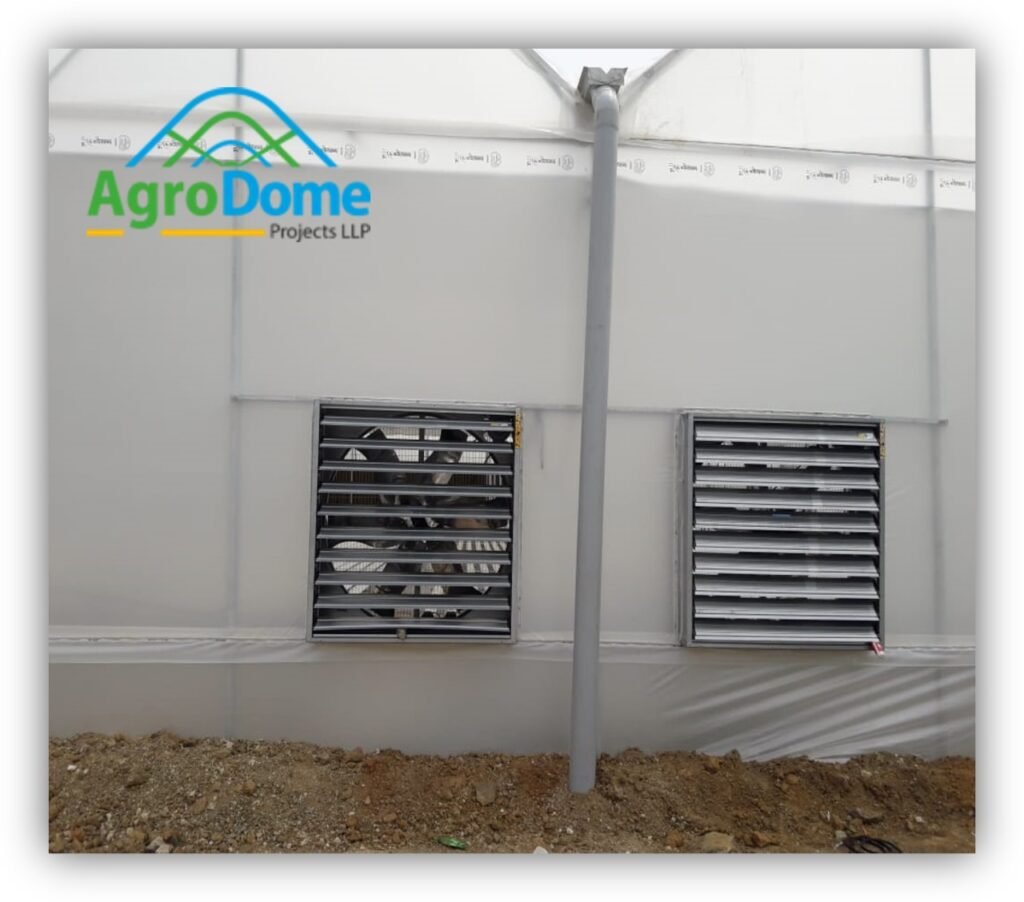

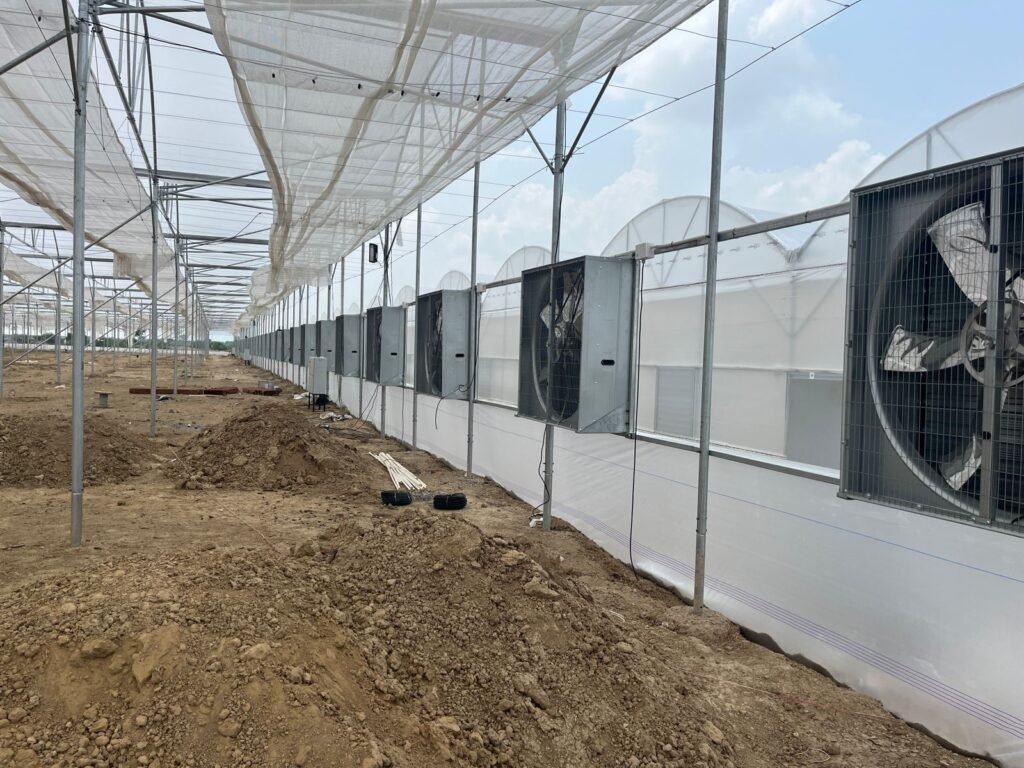

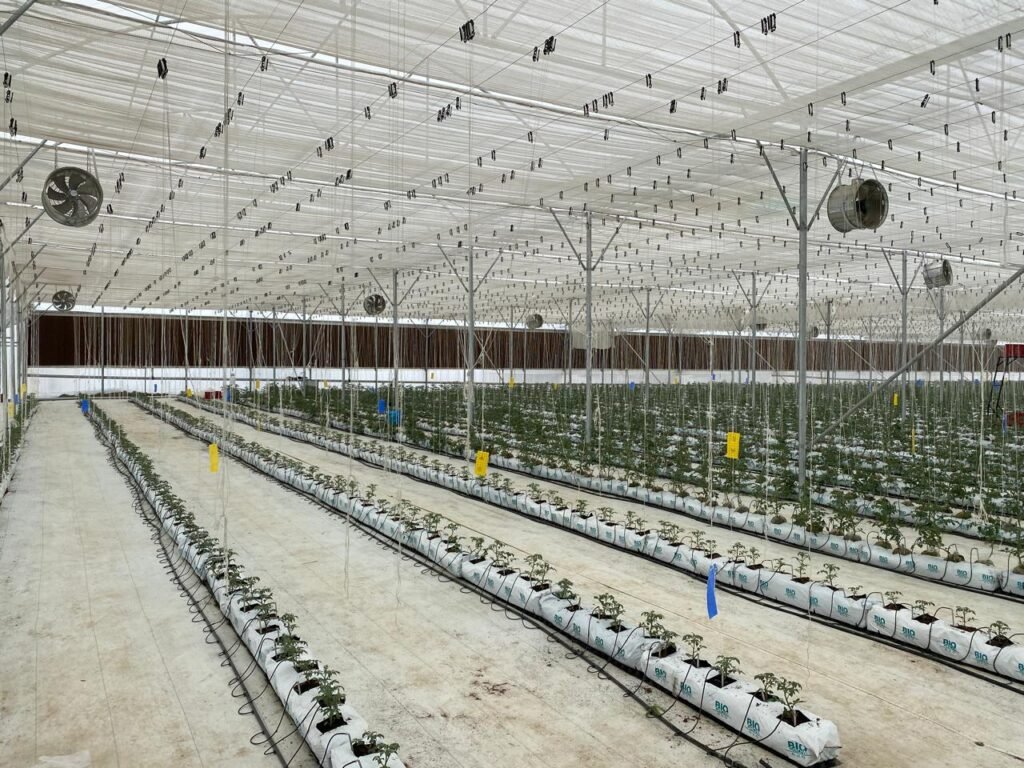
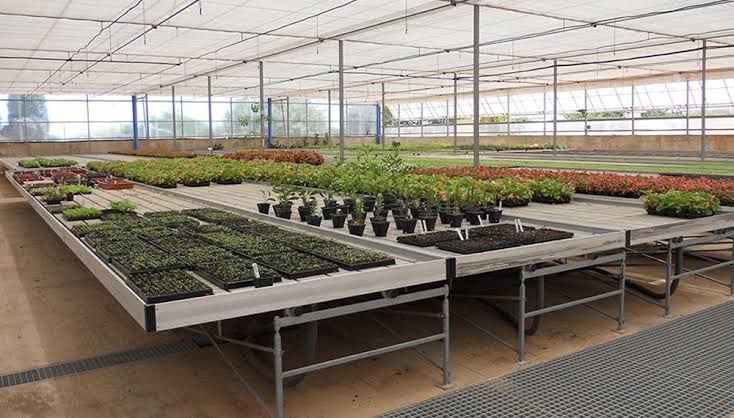



The Role of Fans and Pads in Climate Control
The fans installed in a fan-pad polyhouse serve multiple purposes. They ensure air circulation, preventing the formation of stagnant air pockets and reducing the likelihood of diseases and pests. The gentle breeze created by the fans mimics the natural wind, stimulating plant growth and strengthening their stems.
But the fans’ significance doesn’t end there. They also play a crucial role in maintaining the desired temperature and humidity levels. By strategically positioning the fans, farmers can create air movement patterns that distribute heat and moisture evenly throughout the polyhouse. This helps in preventing temperature fluctuations and moisture imbalances, which can be detrimental to plant health.
Now, let’s talk about the pads. These remarkable pieces of technology are not just any ordinary material. The pads, usually made of high-quality cellulose, are designed to provide maximum surface area for evaporation. They are carefully selected to have the perfect balance between water absorption and airflow resistance.
Water is continuously circulated over the pads, creating a thin film that evaporates as air passes through. This evaporation process cools down the air, reducing the ambient temperature within the polyhouse. It’s like having a natural air conditioner for plants, ensuring they thrive even in scorching summers.
So, the next time you step into a fan-pad polyhouse, marvel at the intricate design and the science behind it. From the carefully partitioned sections to the strategic placement of fans and pads, every element works in harmony to create the perfect environment for plant growth. It’s a testament to human ingenuity and our commitment to sustainable agriculture.
The Benefits of Fan-Pad Polyhouses for Modern Farming
Fan-pad polyhouses offer several advantages for farmers seeking to optimize their agricultural practices. Let’s explore some of the key benefits:
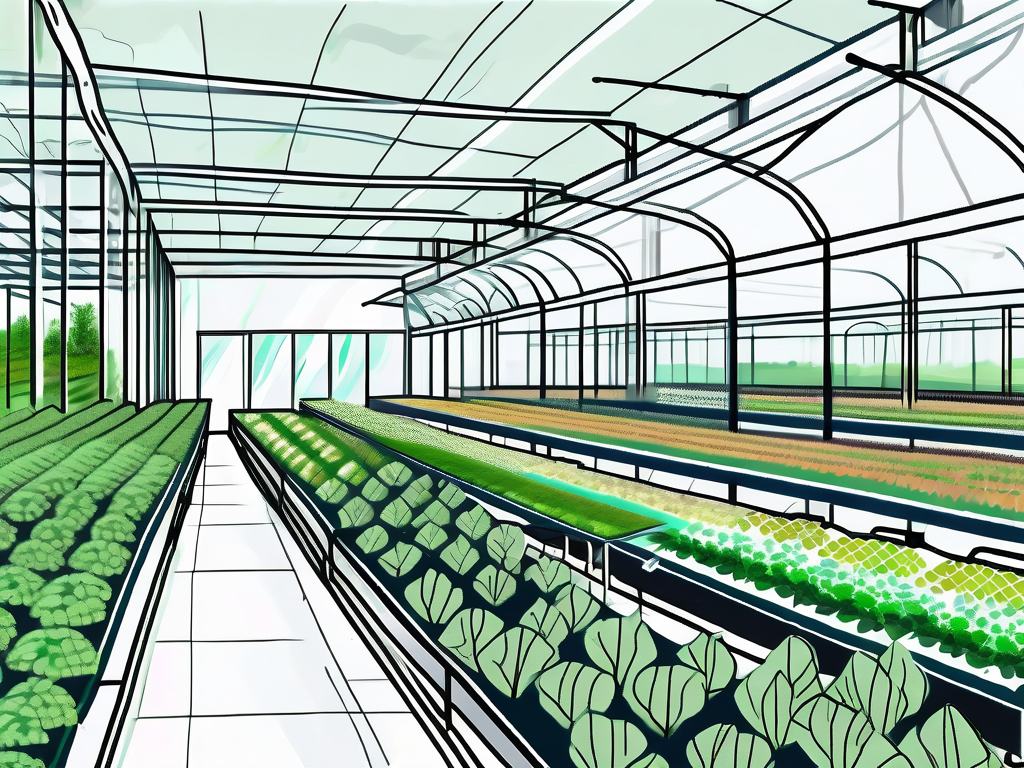
Enhancing Crop Yield and Quality
The controlled environment provided by fan-pad polyhouses significantly improves crop yield and quality. Farmers can manipulate temperature, humidity, and light levels, creating ideal conditions for their specific crops. This level of control allows for year-round cultivation, reducing the reliance on external factors such as weather patterns.
The controlled environment also minimizes the risk of diseases, pests, and weeds, resulting in healthier plants and higher yields. Furthermore, fan-pad polyhouses enable farmers to cultivate crops that are not native to the region, expanding the range of produce available locally.
For example, imagine a farmer in a region with a cold climate who wants to grow tropical fruits. With a fan-pad polyhouse, they can create a warm and humid environment, mimicking the conditions found in tropical regions. This opens up new possibilities for farmers to diversify their crops and meet the demands of a changing market.
Reducing Water and Energy Consumption
Fan-pad polyhouses promote efficient water and energy use in agriculture. The evaporative cooling system helps maintain a comfortable temperature for plant growth while minimizing water consumption. The circulation of air through the pads ensures that the water applied to the plants is efficiently utilized, reducing the amount of water wasted through evaporation.
Additionally, the fan-pad polyhouse design optimizes energy consumption by utilizing natural ventilation and passive cooling techniques. The reliance on artificial heating or cooling systems is significantly reduced, resulting in lower energy costs for farmers.
Consider a farmer who wants to grow lettuce in a hot and arid region. With a fan-pad polyhouse, they can create a cool and humid environment, preventing the lettuce from wilting under the scorching sun. By using the evaporative cooling system, the farmer can save water by efficiently delivering it directly to the plant’s roots, minimizing evaporation.
Furthermore, the reduced energy consumption of fan-pad polyhouses not only benefits the environment but also the farmers’ bottom line. With lower energy costs, farmers can allocate their resources more effectively, investing in other areas of their operations to further enhance productivity.
The Challenges of Implementing Fan-Pad Polyhouses
While fan-pad polyhouses offer numerous benefits, their implementation is not without challenges. Let’s explore some of the main obstacles faced by farmers:
Fan-pad polyhouses, also known as greenhouse cooling systems, are designed to provide a controlled environment for optimal plant growth. In addition to regulating temperature and humidity, these structures offer protection from external elements such as pests, diseases, and extreme weather conditions. This controlled environment allows farmers to extend their growing season, cultivate a wider variety of crops, and improve overall crop quality.
Initial Investment and Maintenance Costs
The initial setup of a fan-pad polyhouse involves significant capital investment. The cost of procurement and installation of the structure, fans, pads, and other necessary components can be substantial. However, it’s important to consider the long-term benefits and potential returns on investment that can be achieved through increased crop yield and quality.
Additionally, ongoing maintenance is crucial to ensure the efficient operation of the polyhouse. Regular cleaning and inspection of fans, pads, and other components are necessary to prevent malfunctions and maintain optimal performance. Investing in automated monitoring systems can help farmers track environmental conditions and make timely adjustments to ensure the health and productivity of their crops.
Need for Technical Knowledge and Training
Implementing a fan-pad polyhouse requires a certain level of technical knowledge and expertise. Farmers need to understand the principles of climate control, water management, and crop-specific requirements. Training and education programs are essential to equip farmers with the necessary skills to operate and maintain the polyhouse effectively. Collaboration with agricultural experts and research institutions can provide valuable guidance and support throughout the process.
Furthermore, staying updated on the latest advancements in greenhouse technology and sustainable practices is essential for maximizing the benefits of fan-pad polyhouses. Implementing integrated pest management strategies, water recycling systems, and energy-efficient solutions can not only improve crop production but also reduce environmental impact and operating costs in the long run.

The Future of Fan-Pad Polyhouses in Sustainable Agriculture
The potential for fan-pad polyhouses to revolutionize sustainable agriculture is immense. Let’s explore some promising aspects of their future:
Potential for Scaling and Adaptation
As advancements in technology and materials continue, fan-pad polyhouses have the potential to become more cost-effective and scalable. Innovations such as more efficient fans, durable pad materials, and automated control systems can enhance the overall performance and reduce the maintenance requirements of these structures. This scalability enables farmers to adapt the concept to different climates, regions, and crop types.
Imagine a future where fan-pad polyhouses are not limited to traditional agriculture but are also utilized in urban farming. With the ability to scale down the size of these structures, urban farmers can create mini poly houses on rooftops or in small backyard spaces. This opens up new opportunities for sustainable food production in densely populated areas, reducing the carbon footprint associated with transporting produce from rural to urban centers.
Contribution to Food Security and Climate Resilience
By providing a controlled environment for year-round cultivation, fan-pad polyhouses contribute to both food security and climate resilience. The ability to grow crops continuously, regardless of external conditions, helps mitigate the impact of climate change on agricultural productivity. This resilience ensures a stable food supply and reduces dependence on imported produce, improving local food security.
Furthermore, fan-pad polyhouses have the potential to play a significant role in addressing the challenges posed by water scarcity. With the integration of advanced irrigation systems and water recycling technologies, these structures can optimize water usage and minimize wastage. This not only conserves a precious resource but also reduces the strain on local water supplies, especially in regions prone to droughts.
The fan-pad polyhouse represents a promising solution for the future of farming. Its ability to enhance crop yield, reduce resource consumption, and overcome climate challenges makes it an attractive option for modern farmers. With ongoing advancements and increased adoption, fan-pad polyhouses have the potential to play a significant role in sustainable agriculture, ensuring a resilient and prosperous future for the farming industry.

